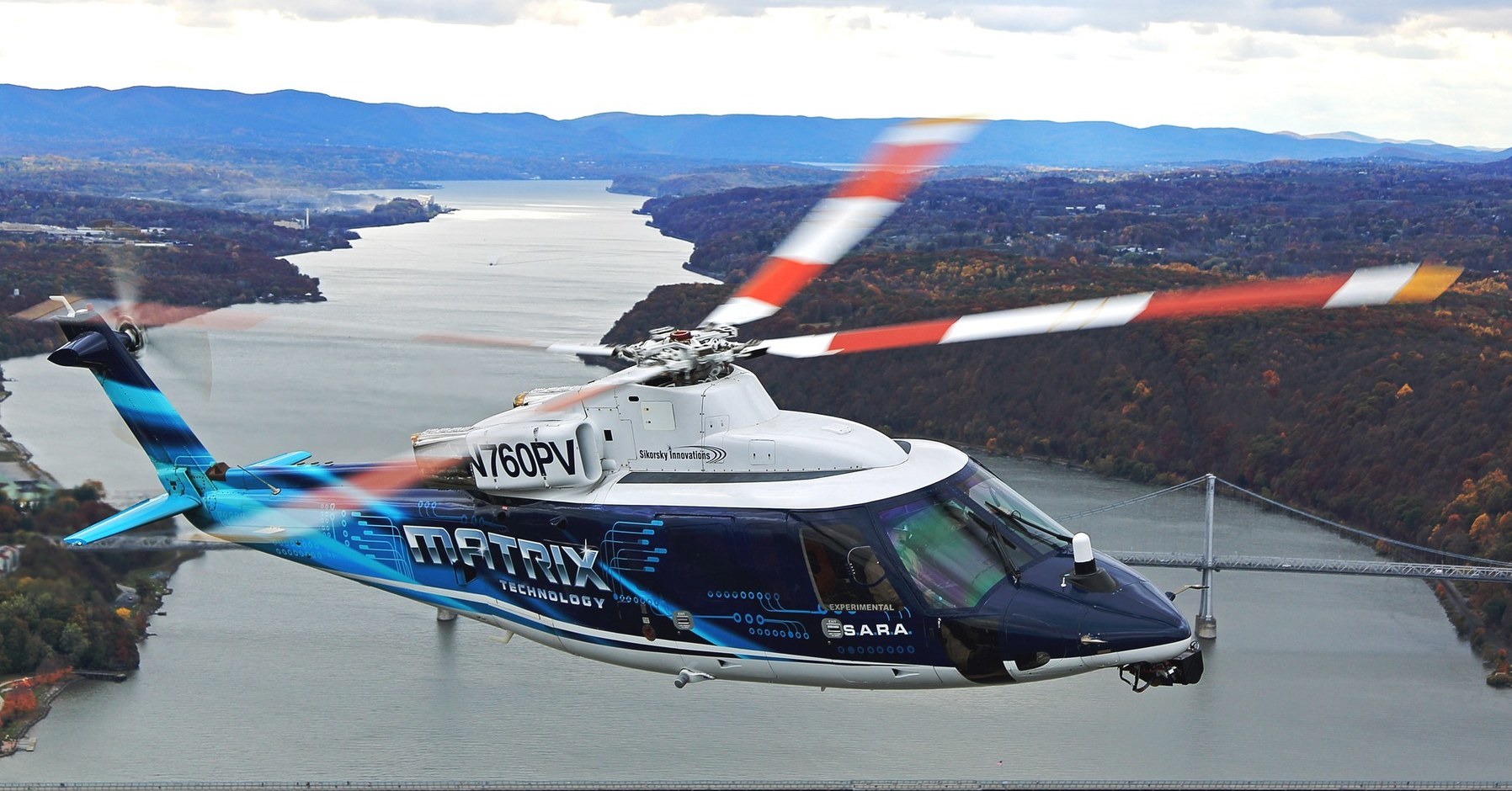The aviation industry is already deep into the challenge. In May, Boeing-owned Aurora Flight Sciences’s unmanned cargo delivery system, installed in an old Bell UH-1H helicopter, completed the first autonomous mission, bringing gas, water, and medical supplies to Marines in California. Lockheed Martin has been developing its K-MAX unmanned helicopter since 2007, beginning with remote-controlled and semi-autonomous versions that made supply deliveries in Afghanistan between 2011 and 2014.
Sikorsky’s version is the Matrix Technology system, which it’s been testing since 2013 aboard the Sikorsky Autonomy Research Aircraft (SARA) testbed that Ward pilots, an adapted version of the company’s S-76 commercial helicopter. Its most basic functionality includes flying traffic patterns around airports and tracking moving objects on the water for approaches and landings.
More impressively, SARA has completed a 30-mile autonomous flight with takeoff, cruise, and landing—including landing-site evaluation and selection—all done by computer. That was enough to get it to the final phase of Darpa’s Aircrew Labor In-Cockpit Automation System (ALIAS) program, which seeks a system that will reduce crew requirements for existing aircraft. The company is also in the process of modifying two UH-60 Black Hawk helicopters with Matrix, to offer the Army “optionally-piloted” options for the aircraft. It will demonstrate these over the coming year.
Sourced through Scoop.it from: www.wired.com



Leave A Comment